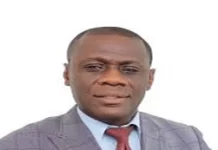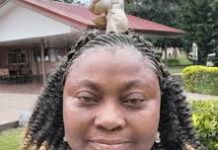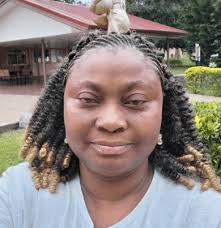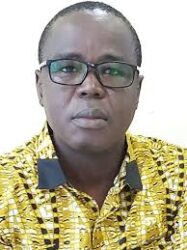By Christopher BURKE
Galamsey videos on TikTok, YouTube and WhatsApp often focus on flashy equipment, quick cash and the thrill of “striking gold dust.” Shiny boots, drones and an aura of adventure make it appear glamorous.
However, behind these viral clips lie real, devastating costs: poisoned rivers, cleared forests and entire communities uprooted.
Hidden toll on water and land
Heavy machinery and chemicals used by galamsey miners seep into streams and rivers. In Prestea and Tarkwa in Western Ghana, the Mwin and Ankobra rivers now run brown and toxic, unfit for drinking or farming.
Local wells run dry or become contaminated, forcing families to walk miles for clean water. Abandoned pits leave the land a dusty wasteland. What was once productive farmland with cassava, maize or cocoa becomes useless. Farmers lose their harvests and local food sources dwindle.
Deforestation and Displacement
Every scoop of earth removed means another tree cut. Around Obuasi Road and Dixcove, forests vanish as miners push deeper. Wildlife lose their habitats and the ecosystem collapses. Makeshift camps sprout near dig sites, drawing workers from elsewhere and forcing villagers into overcrowded towns. Schools close, clinics are overwhelmed and homes disappear swallowed by expanding pits.
Youth and the Illusion of Glamour
Many young people scrolling social feeds still see galamsey as exciting. Videos show gold nuggets and stacks of cedis. Drone footage creates an illusion of modern success. Influencers describe galamsey sites as fields to make quick money, filming themselves dancing and flashing their finds. Social media rarely shows the aftermath–a river that once teemed with fish now run poison brown or a cocoa farm buried under silt.
Demanding Real Data, Not Just Clips
The main sources of information on galamsey are contained in studies and policy papers produced in Accra that few will read. To understand the full impact of galamsey, local, visual data is essential: simple maps showing water tests from Tarkwa to Axim; charts illustrating hectares of forest cleared around Sefwi Wiawso and graphics mapping towns to illegal mining sites.
Instead of downloading a lengthy report on Environmental Policy, texting the name of a community to a WhatsApp number that instantly returns a map of river‐pollution levels and forest loss is far more accessible. Such data speaks directly to youth who lack the time and trust for long reports.
Linking this data to Ghana’s role in the Extractive Industries Transparency Initiative (EITI) boosts accountability. The gap is clear when EITI revenue reports claim a company paid certain royalties, but local maps show contaminated streams and dying cocoa trees. Such discrepancies prove why transparency is the antidote to corruption echoing the proverb “Obi nnim a, obi kyerɛ”—“One who does not know can learn from another.”
Concrete Tools for Local Action
Interactive, village‐level “picture maps” in Akan let anyone click or text a town name to see how many water samples tested unsafe, how many hectares of forest were cleared and which galamsey operators are nearby. Shareable infographics comprising “Before vs. After” posters can show how the Ankobra River looked last year compared to today or chart forest loss.
These spread rapidly via WhatsApp and local Facebook pages. A mobile‐friendly dashboard can offer a one‐tap summary: Mwin River: Safe/Unsafe; Forest Cover: Percent Lost and Illegal Mining Hotspots. No endless menus, simply concise updates. Weekly Mining Watch segments on community radio broadcast in Fante, Twi or Wassa feature local farmers, environmental scientists and youth activists and invite listeners to report new sites via voice note.
Engaging Schools and Local Organizations
In schools, teachers can introduce a galamsey lesson: reading water‐quality charts and recognizing soil contamination. Science classes might use printed maps of forest loss, guiding students to see how ecosystems collapse when mining runs unchecked.
Local NGOs such as the Wassa Youth Federation or the Sefwi Farmers’ Association can host data workshops where small teams chart forest loss over recent years or map operators responsible for pollution. Translating data into familiar dialects and sharing it via WhatsApp, bulletin boards or announcements at the chief’s palace can ensure information reaches those most affected.
From Awareness to Accountability
When youth see data that directly affects their village, they are less likely to be fooled by glamorous social-media clips. They learn that “galamsey cool” only lasts until the stream runs dry or a farm yields nothing. Once they know the true costs, clearly displayed on maps and charts, they will act. A student in Prestea could document rising lead levels in the Ankobra River just before a popular influencer posts a bragging TikTok. A counter-clip might declare: “Lead levels are 60 percent above safe limits.” Social media thus becomes a tool for accountability rather than glorification.
Building Youth Networks for Change
This approach goes beyond “educating youth.” It empowers them as watchdogs. Local youth networks including student unions, church groups or informal WhatsApp clusters can share real-time data, organize clean-up drives or petition the Minerals Commission to close illegal sites.
If a dashboard update states “Forest cover down 15 percent this quarter” around Tarkwa, youth coordinators can organize community patrols and report new diggers via voice note. That same data can be raised at a town hall meeting or an EITI stakeholder consultation in Accra to demand swift enforcement.
Call to Action
Galamsey is not only an environmental problem. It is an economic and social crisis. With simple data tools such as basic maps, infographics and local dashboards; social media hype can be leveraged as evidence-backed activism. Young people should ask: Where does my water come from? How much forest has my village lost?
Which operators are behind this? They can text a hotline, tune into Radio XYZ at 7 pm on Fridays or join the Ghana Youth Network’s WhatsApp channel. Learning to interpret this data empowers them to hold miners and other relevant stakeholders to account.
Christopher is a senior advisor at WMC Africa, a communications and advisory agency located in Kampala, Uganda. With over 30 years of experience, he has worked extensively on social, political and economic development issues focused on governance, extractives, the environment, agriculture, public health, communications, advocacy, peace-building and international relations in Asia and Africa.










